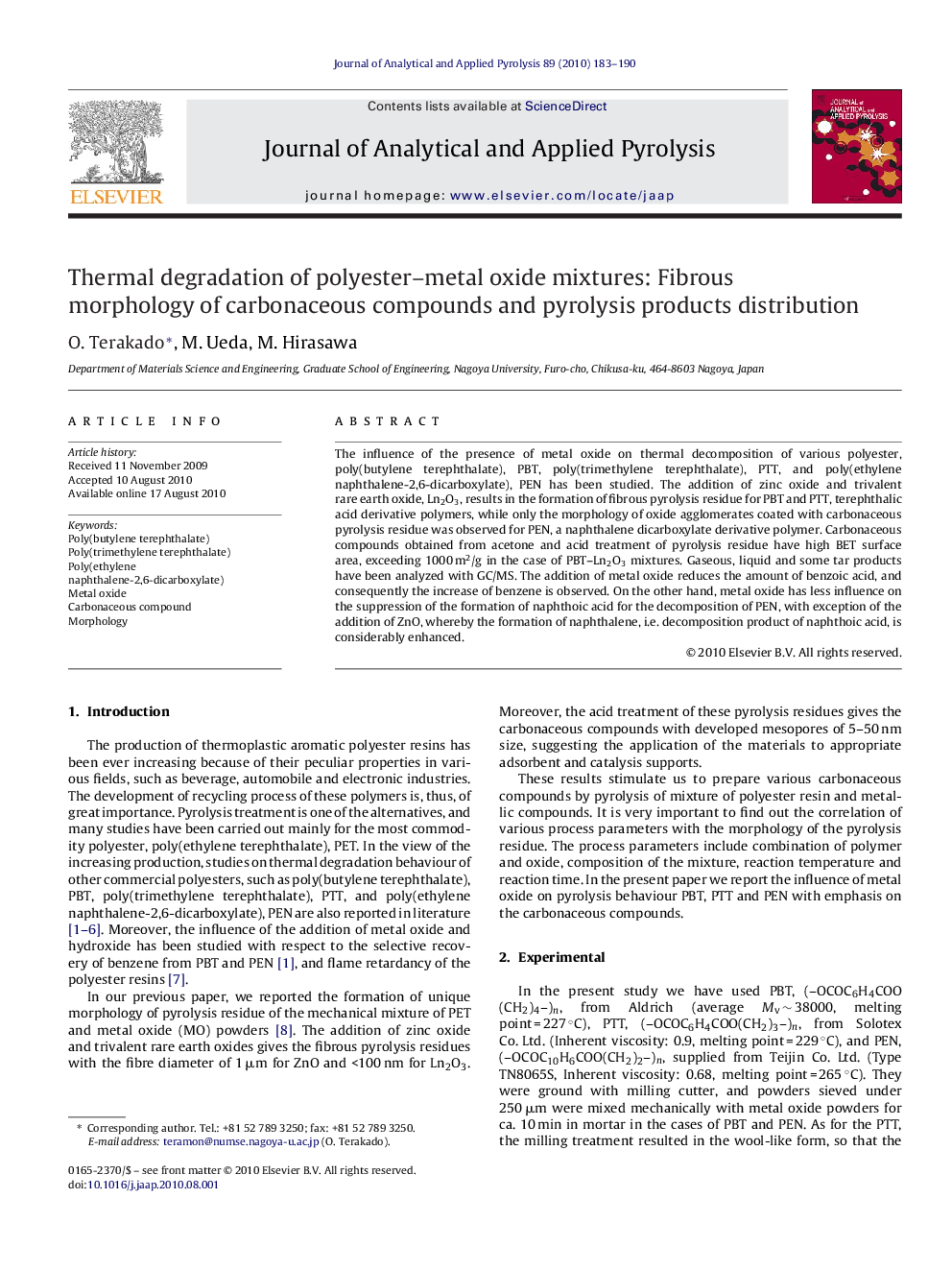| Article ID | Journal | Published Year | Pages | File Type |
|---|---|---|---|---|
| 1197630 | Journal of Analytical and Applied Pyrolysis | 2010 | 8 Pages |
The influence of the presence of metal oxide on thermal decomposition of various polyester, poly(butylene terephthalate), PBT, poly(trimethylene terephthalate), PTT, and poly(ethylene naphthalene-2,6-dicarboxylate), PEN has been studied. The addition of zinc oxide and trivalent rare earth oxide, Ln2O3, results in the formation of fibrous pyrolysis residue for PBT and PTT, terephthalic acid derivative polymers, while only the morphology of oxide agglomerates coated with carbonaceous pyrolysis residue was observed for PEN, a naphthalene dicarboxylate derivative polymer. Carbonaceous compounds obtained from acetone and acid treatment of pyrolysis residue have high BET surface area, exceeding 1000 m2/g in the case of PBT–Ln2O3 mixtures. Gaseous, liquid and some tar products have been analyzed with GC/MS. The addition of metal oxide reduces the amount of benzoic acid, and consequently the increase of benzene is observed. On the other hand, metal oxide has less influence on the suppression of the formation of naphthoic acid for the decomposition of PEN, with exception of the addition of ZnO, whereby the formation of naphthalene, i.e. decomposition product of naphthoic acid, is considerably enhanced.
